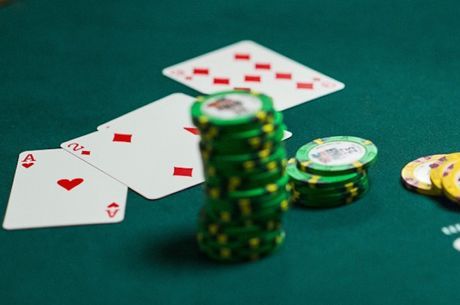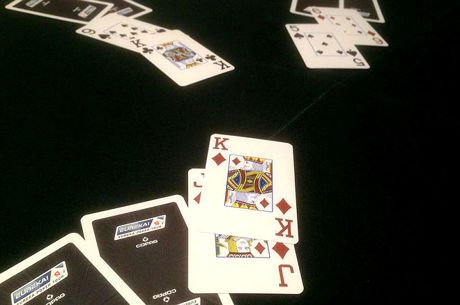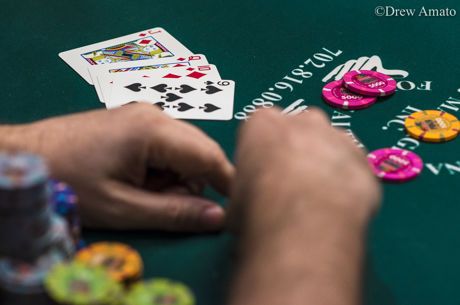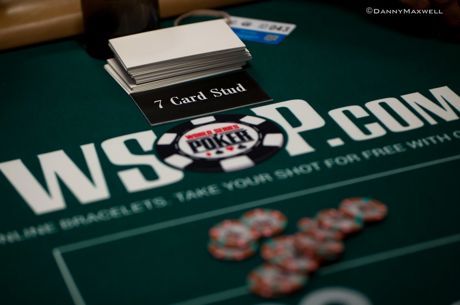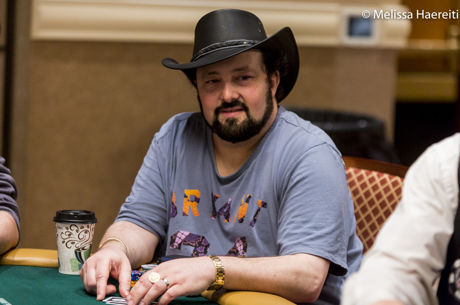Stud Poker Strategy - Doesn't Look Good, But It Is - Part II

In my last column I showed you some examples of hands that looked initially like they should not be played. But I explained how they really had some value. I focused on relatively simple cases. This one is slightly more complicated.
You're in a $20/40 game with $3.00 antes and a $5 bring-in. You started with (8s8d)As. A very strong, sometimes wild, tricky player with a King raised the bring in after everyone but you and another player and the bring-in folded. You figured he might be trying to steal with his King. You re-raised, hoping to resteal from him – often the best defense against a semi-bluff. Clever, but it didn't work. A poor loose calling station with a Ten as an exposed card called as did the King who raised initially.
You caught the 2s on fourth. The King caught an unsuited Queen and the Ten caught a 3d. You were high with your As2s.
You checked. The Ten checked. The King bet. This looks like a good time to fold. But it isn't – at least not all the time. Your best play, at least some of the time, is to raise – for a check-raise.
Though you can't make this move all of the time, lest your opponents get wise to your tricks, you have everything perfectly aligned for this check-raise semi-bluff. Consider the following.
You have an excellent read on at least one of your opponents. You have to figure the guy with the Ten exposed for a pair of Tens. He's passively calling because he has a pair – waiting to see if he gets trips by the time the bets double. It's an awful strategy –with only two cards that will really help him (and many other cards that will get him into trouble with a low two pair) – but he's a poor player.
Ironically though, this bad player may well have the best hand – since you only have a pair of 8s and your wild and crazy third opponent may well have only a King high or a small pocket pair. So you want to knock out the player with a pair of Tens as best you can.
You suspected that he would have called your fourth street single bet, given that he called your double bet on Third Street. But, you reason, even this calling station may well fold for the obvious power of a check-raise double bet.
So too, you hope, will you convince your betting King that you really have the pair of Aces. Though he may have been familiar and a bit contemptuous of your attempt to win the money on third street, by keeping up the impression of power, you may convince him to fold if he doesn't have the pair of Kings – and maybe even if he does. But even if he has the Kings and decides to call you down – not to fall prey to bluff – you really aren't that far behind.
According to twodimes.com (a web site that provides instant hand comparisons) with your pair of 8s, Ace kicker, and 3-flush you're only about a 47% to 53% underdog – assuming you're up against a pair of Kings. When you look at the money already in the pot and combine it with the possibility that your opponent will fold or that you'll convince him to fold on a later street if you catch something scary like a third suited card, it surely makes sense to make this move
In all of these examples, it's tempting to put yourself on auto-pilot and fold your hand because it doesn't look strong. But this is giving up some significant profit in the long run. Better to pay attention and give due weight to all of the factors that can go into a profitable play before deciding to fold. Sometimes broad rules of thumb should be thrown out the window.





